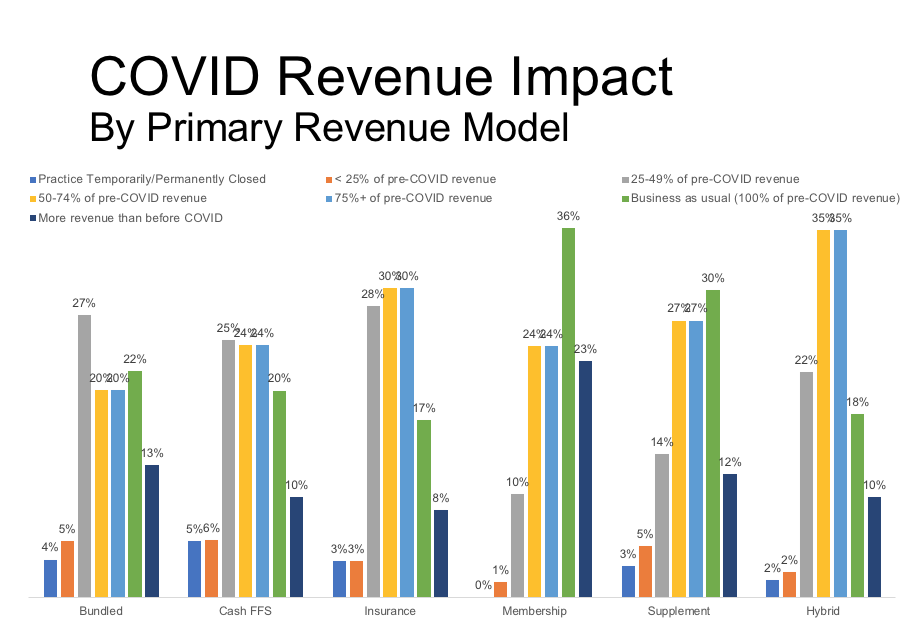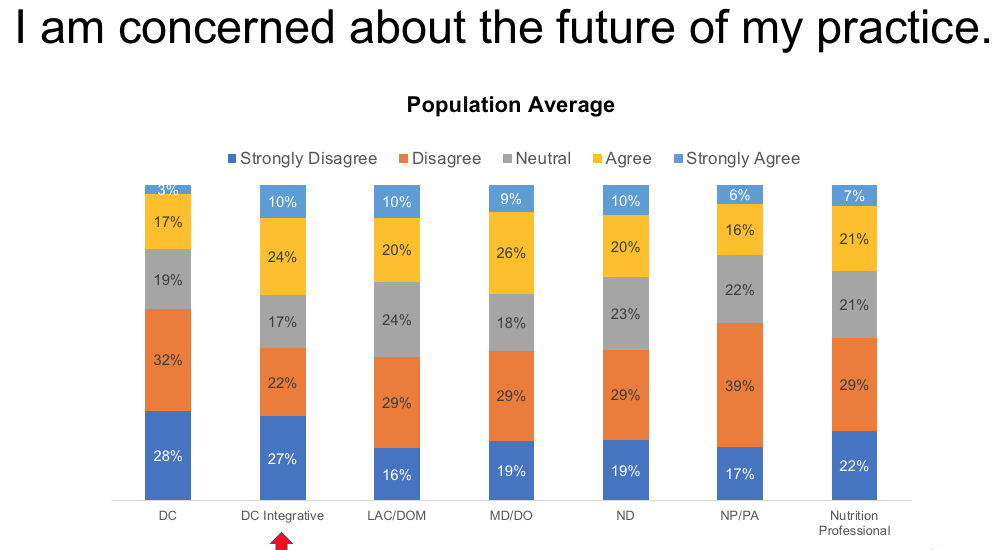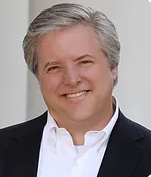Data from a survey of over 3,500 functional, integrative, and metabolic medicine practitioners suggests that most are navigating the stormy post-COVID waters with considerable resilience.
Compared with other physician surveys posted over the course of the last 9 months, the functional and holistic clinicians in this cohort report fewer practice closures and less income loss.

Membership (aka “concierge”) and bundled practice models appear to be protective against the economic forces that have hobbled many conventional insurance-based practices in the wake of COVID. This is especially true for small, independent practices.
This new 33-question survey was fielded from late August through early September by OvationLab, a strategic consulting agency for the health, wellness, and nutrition space. OvationLab’s principals—Laurie Hofmann, Andie Crosby, and Tom Blue—have all served in leadership roles at the Institute for Functional Medicine for many years.
“This is a triumph for value-based medicine over conventional fee-for-service insurance models. There’s never been a better rationale for conventional practitioners—especially those in independent practices– to expand their capabilities, and to learn to apply root-cause medicine.”
—Tom Blue, OvationLab
They obtained 3,505 responses, representing clinics from all across the nation. MDs and DOs make up 28% of the total, with naturopaths, nurses, and integrative chiropractors representing 12% each. Eighteen percent are “straight” chiropractors, the remainder represents a mix of nutrition professionals, acupuncturists, and others.
Roughly two thirds are female, and the average age was 54.
The respondents work in a wide range of practice models including conventional insurance-based practices (29%), direct fee-for-service (46%), membership (aka “concierge”) practices (5%), Bundled or fixed-price programs (4%), and hybrid models (9%) that combine conventional insurance with low-level engagement in direct pay, bundled programs, group visits, or other revenue models.
An additional 7% have practices in which supplement sales are a major revenue source.
Few Closures
COVID-related practice closures were far lower among functional/holistic medical practitioners compared with physicians as a whole. The closure prevalence in this cohort ranged from 2-13%, depending on practitioner type. It was lowest among the MDs, DOs, and NDs (2%), and highest among the acupuncturists (13%), the “straight” chiropractors (5%), and nutrition professionals (5%).
There were no closures among doctors who run membership or bundled service practices. Among insurance-based practices, the closure prevalence was 3%; it was 5% in the cash fee-for-service segment.
This compares favorably against data from a Physicians Foundation (PF) survey published in August showing that 14.5% of 3,513 respondents had closed their practices, and an additional 4% expected to close over the course of the year. Most of the closures (76%) were among independent private practices.
There were no closures among doctors who run membership or bundled service practices. Among insurance-based practices, the closure prevalence was 3%; it was 5% in the cash fee-for-service segment.
A regional survey in April by New York University’s School of Global Public health showed 15% of metro-NYC area practices were temporarily or permanently closed due to lack of PPE, insufficient staff, or drastic declines in patient volume and revenue.
Impact on Income
Though closure rates were low, OvationLab’s data show that many functional medicine practices have borne revenue shortfalls. Upward of 75% of respondents were economically impacted in some way. Between 20% and 25% are operating at 25-49% of their pre-COVID revenue levels, and between 1% and 11% are getting by on less than 25% of pre-pandemic income.
On the positive side, roughly one-fifth of the respondents say that their income has remained at pre-pandemic levels, and 7% to 14% say it has actually increased over the last 9 months.

In contrast, the PF estimates that 16% of the total US physician workforce—that’s roughly 134,000 doctors—have changed their practice patterns in some way that temporarily or permanently disrupted continuity of care. In that survey, 72% of physicians had experienced income reductions and 55% expected income drops by the year’s end.
The hardest hits have been on solo and small-group independent practices.
OvationLab’s Tom Blue points out that the vast majority of holistic and functional physicians fall into that independent solo or small-group bracket, and it seems they are faring considerably better than their peers in conventional practice.
Membership Has Benefits
Though only 5% of OvationLab’s cohort run membership practice models, these proved extremely resilient to the post-COVID economic assault.
None of the membership practices had closed, 36% reported they were operating at “business as usual” revenue levels (100% of Pre-COVID), and 23% say revenue is up.
Among those clinics deriving a major portion of their income from bundled clinical services—things like cardiovascular risk reduction programs, weight management groups, and hormone replacement protocols—22% have maintained pre-pandemic income, and 13% have seen revenue increases.
In contrast, only 17% of the insurance-based practices maintained their pre-COVID revenue, and just 8% saw increases.
Some clinics offering bundled services did see revenue drop; 28% reported a 50% or greater revenue hit due to COVID. In contrast, only 10% of the membership practices saw such big revenue declines.
Practices that completely ignored COVID, and offered nothing specific to support patients concerned about the virus are worse off because of this. On average, these practices have generated 13% less revenue than those offering at least one COVID-related services.
Overall, the findings do suggest that membership and, to a lesser extent, bundled practice models provide independent practices with some protection against the economic and social forces that drove many insurance-based indie practitioners to shut their doors during the pandemic’s first wave.
“When you look at the active patient census of membership practices collectively across the country, you can’t even tell that COVID happened. According to data from Hint Health, the largest membership payment processor for the concierge and DPC industry, membership practices collectively grew 4% between March and July,” Blue says. Hint processes patient payments for roughly 1,000 practices around the US.

“They ran the numbers, and nationwide, there was no net attrition (in patient membership payments) over the 60 days in total shutdown. In fact, it grew 1%,” Blue told Holistic Primary Care. “A pandemic is not a smart time to fire your doctor.”
Challenges Ahead
The economic tenacity of the membership model may be more a reflection of the affluence of its patient base than of its intrinsic strengths. People who can afford to pay a monthly out-of-pocket fee to join a clinic—typically in addition to, not as a substitute for what they pay for standard health insurance—are generally well-off and much less likely to be forced to choose between healthcare and food or shelter.
Whether the situation remains so sanguine for private-pay remains to be seen.
Many well-paid white-collar jobs have been dashed during the pandemic, and more could be lost in the coming months. While COVID has caused many more people to focus on their health—and to recognize the limits of conventional medicine–it has also put many in precarious fiscal straits.
“If this carries on long enough it could become a big challenge for people to pay for private-pay healthcare services,” Blue said in an interview with Holistic Primary Care.

“It would be prudent to take a hard look at practice efficiency and optimizing for value, which is basically outcomes over cost. We talk a lot about this, but in terms of doing the work to optimize, that’s a big opportunity.”
“If this carries on long enough it could become a big challenge for people to pay for private-pay healthcare services.”
–Tom Blue, OvationLab
According to an IFM survey, the throughput of a typical functional medicine practice is seven patients per day, give or take. “If you bring this up to 12 per day– which is still far less than in conventional care–it makes a huge difference financially,” Blue says.
Group Visits: No Panacea
The business model that appears to be gaining the greatest traction is the use of bundled programs. In OvationLab’s survey, 19% of the respondents indicate that they are generating some revenue from this approach. But by and large, this model is the exception, not the rule.
That said, 54% of respondents agreed that they would implement bundled programs if these were set up in a turn-key manner by trustworthy and experienced third parties.
While a growing number of practices are beginning to work with groups of patients, either through group visits or group coaching and education programs, these were not a meaningful source of practice income within the cohort.
“Some of the most exciting implementations of group visits have taken place in health systems like Cleveland Clinic Center for Functional Medicine. But the great majority of our respondents are in independent practices,” Blue points out.
Telemed: Finding the Right Mix
Telemedicine is playing an important role in functional medicine practice survival during COVID, but not exactly in the ways that one might assume.

“The practitioners that were doing 30% to 40% of their visits as virtual visits did the best,” in terms of overall practice resilience, said Blue. “The doctors who pivoted 100% to virtual visits fared worse and now have a significantly lower percentage of their pre-COVID revenue.”
“The healthiest practices have evolved to accommodate a continuum of patient preferences with respect to virtual care. The big take-away seems to be to focus on maximizing access and availability to patients in the ways that they want to use the practice. That means offering virtual visits while maintaining a brick-and-mortar presence.”
Contrary to what many might assume, the main determinant of practice viability during COVID was not the presence or absence of telehealth services, but the overall strength or fragility of the practice’s core revenue and patient engagement models.
One quarter of the MDs/DOs, one-third of the NDs, and nearly half of the nutrition professionals in OvationLab’s cohort are doing more than 60% of their total patient visits remotely.
Not surprisingly, engagement with telemedicine was much lower among chiropractors and acupuncturists: Fully 85% of the straight chiropractors, 53% of the integrative chiropractors, and 55% of the acupuncturists and doctors of oriental medicine are not doing any virtual visits. The services they offer simply cannot be done online.
While the respondents showed a generally high comfort level with things like teleconsults, remote patient monitoring tools, and other big tech, Blue says the processes of adaptation and technology implementation for the COVID era are still very much underway for a lot of practitioners. Many expressed the need for help in further integrating patient-friendly tech solutions in their practices.
Contrary to what many might assume, the main determinant of practice viability during COVID was not the presence or absence of telehealth services, but the overall strength or fragility of the practice’s core revenue and patient engagement models. On that front, practices based on fee-for-service—whether direct pay or insurance-based–appear to be the most vulnerable.
COVID Care
Many of the OvationLab respondents, particularly MDs, DOs, and nurse practitioners, have treated patients with active COVID, though these cases represent a relatively small segment of total patient consultations.
Just over 60% of the MDs/DOs and roughly 55% of the NDs are offering some sort of COVID-related services, such as COVID testing, antibody testing, monitoring or ongoing support of infected patients, COVID prevention programs, or “back-to-work” support programs contracted with employers.
Blue says the practices that completely ignored COVID, and offered nothing specific to support patients concerned about the virus are worse off because of this. On average, these practices have generated 13% less revenue than those offering at least one COVID-related services.
But the COVID crisis creates a unique and thorny paradox for practitioners: on the one hand there’s the imperative to educate patients and provide the care they seek; on the other, patient-focused COVID communication can easily cross the line into “marketing” or “false treatment claims” in the eyes of the Federal Trade Commission and/or Food & Drug Administration. (Visit www.HolisticPrimaryCare.net and watch our webinar Your COVID Communications Could Be Illegal)
Both agencies have been aggressive in scrutinizing practitioners’ online messaging about the pandemic. Since it began, they’ve issued hundreds of warning letters to medical professionals requiring them to delete COVID-related posts if they suggest specific treatments to prevent or cure the syndrome.
Bottom line is, it is easy to unwittingly step over the regulatory line. While it is vital to meet patients’ needs for guidance, you need to be careful about how you do that.
Better COVID Outcomes?
There’s some evidence from OvationLab’s survey that bundled services and membership practices might deliver better overall outcomes for COVID patients.
Insurance-based MDs and DOs who treated COVID patients reported hospitalizing 19% of their infected patients, and had a 3.1% mortality rate.
The MDs and DOs in membership practices reported a 7.2% hospitalization rate for their COVID patients and only a 0.9% mortality rate.
The analysis also showed that physicians who order a lot of advanced cardiovascular lab work (Cleveland Heart Lab, Boston Heart Lab, PULS), tended to have lower COVID hospitalization rates (7.7%), and fewer COVID-related patient deaths (1.8%) than the MD/DO cohort as a whole.
These findings are intriguing but difficult to interpret: Are the lower hospitalization and death rates truly due to the functional medicine approach? Or do they reflect the fact that these clinics tend to serve affluent patients with better overall health status and fewer risk factors?
With respect to these particular observations, OvationLab cautioned that the total number of respondents with heavy COVID caseloads is small, and all the numbers are self-reported.
Value Triumphs
Few healthcare professionals are experiencing smooth sailing these days, and functional medicine practitioners are no exception.
But to OvationLab, the message from their survey is very clear: the principles of root cause medicine combined with value-based practice models have been profoundly protective of independent practices during the COVID crisis, at least so far.
“This is a triumph for value-based medicine over conventional fee-for-service insurance models. There’s never been a better rationale for conventional practitioners—especially those in independent practices– to expand their capabilities, and to learn to apply root-cause medicine,” Blue told Holistic Primary Care.
According to Patrick Hanaway, MD, head of the IFM’s COVID-19 task force, many physicians are doing just that. “At our Annual International Conference (held online this year), we had 50% new people. That’s just amazing to have that many people engaging with the functional medicine conference for the first time. Usually, it’s around 25-30%.”
The surge is partly due to the fact that this year’s online conference was simply more accessible, and did not carry the costs and time-burdens of travel.
But Hanaway also sees it as an indicator that COVID has made more physicians aware of the limits of drug-based care models.
“There’s an openness to other tools. They’re looking to see what can I do to protect myself, what can I do to help my patients? What can I tell patients about how to enhance their immune systems, reduce symptoms, reduce transmission? All those things are very important, and we’ve got tools.”
END







